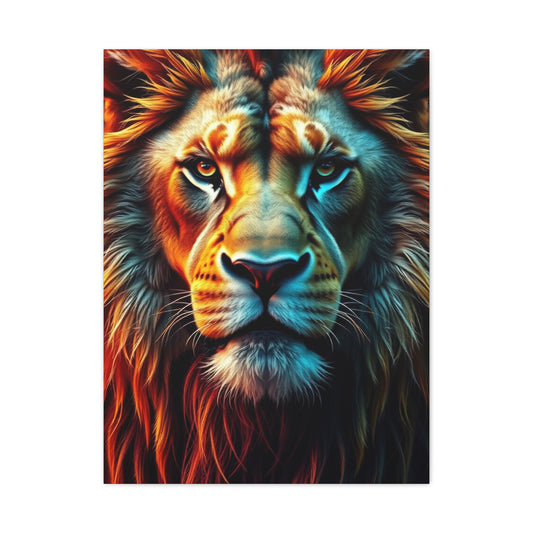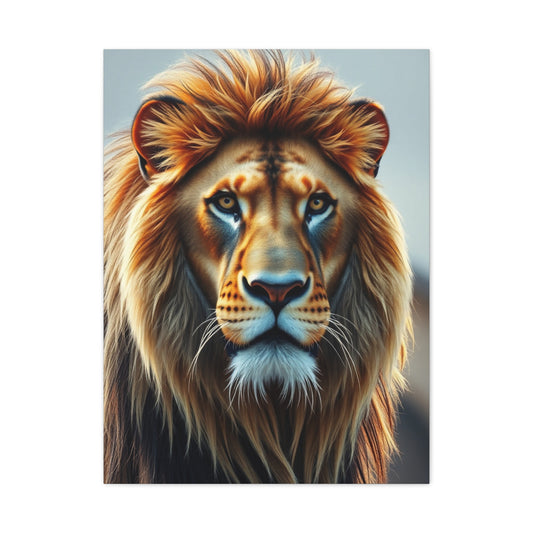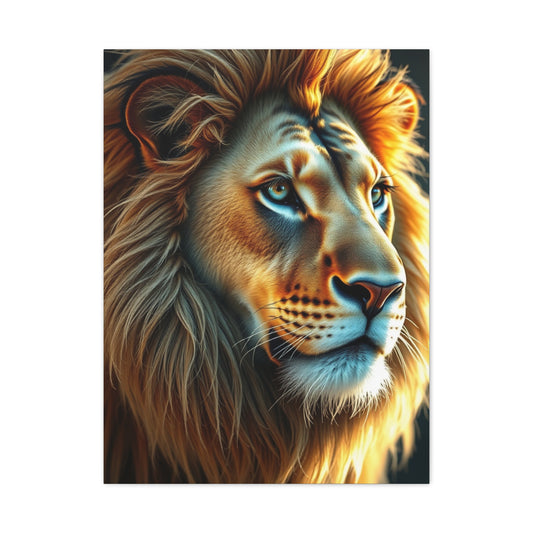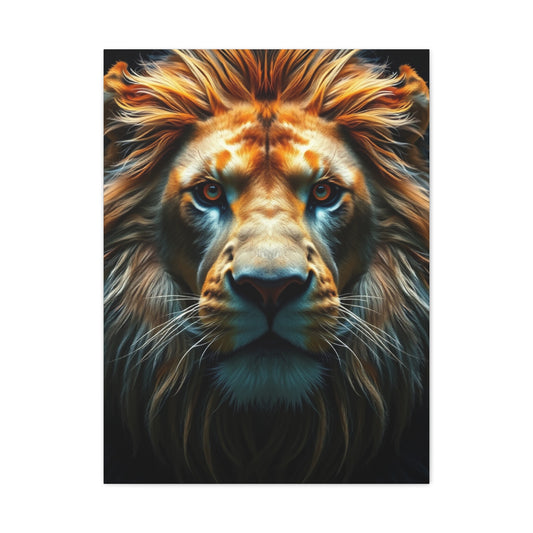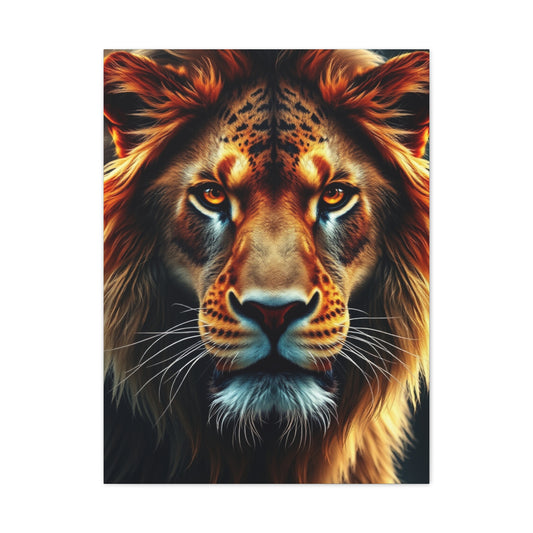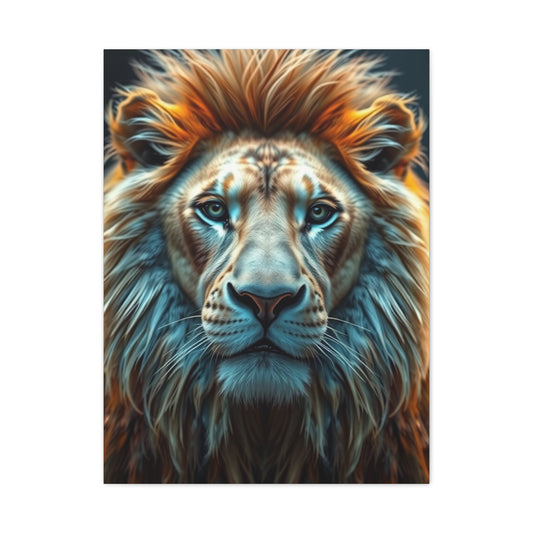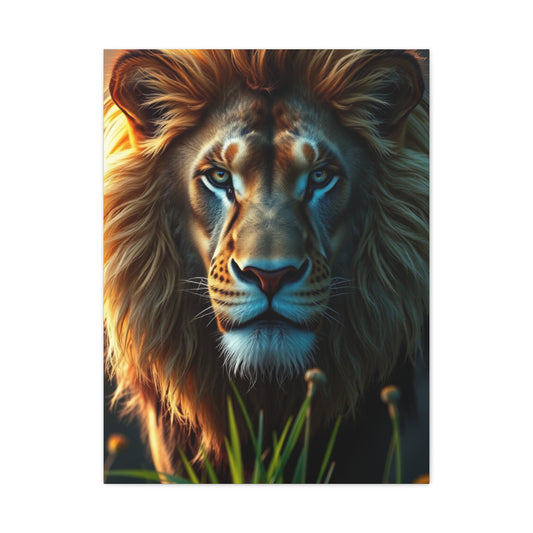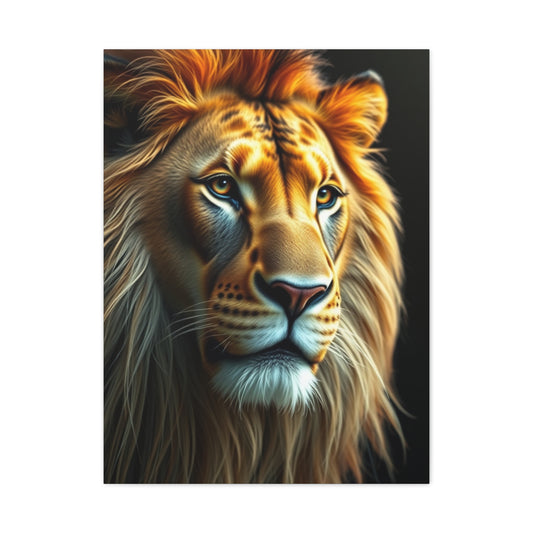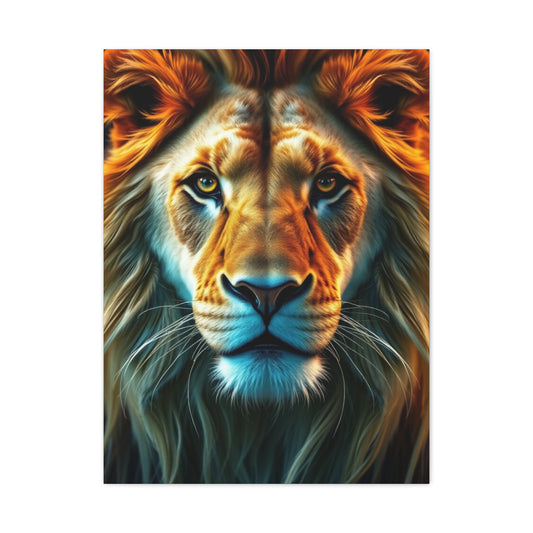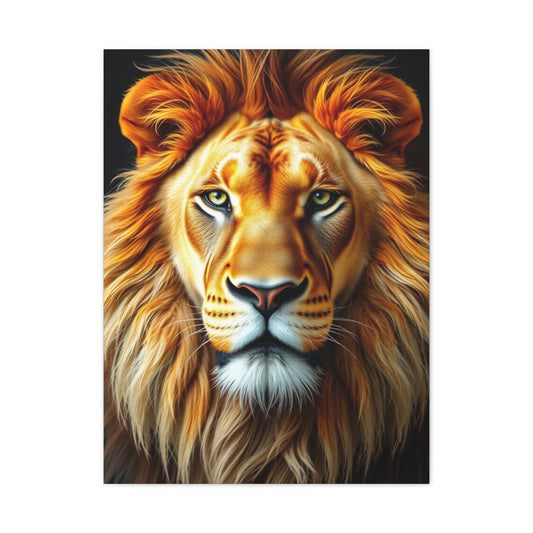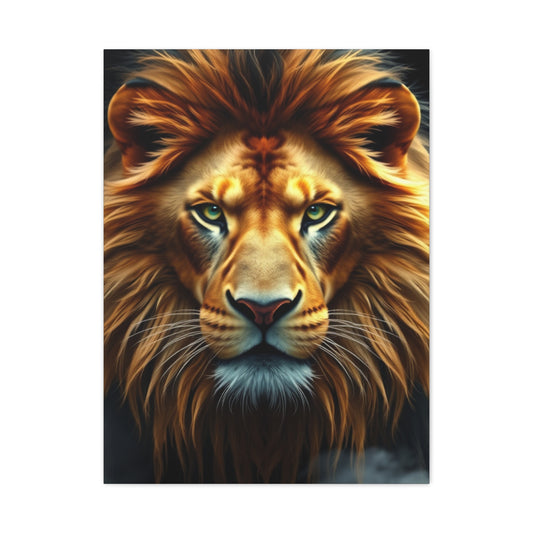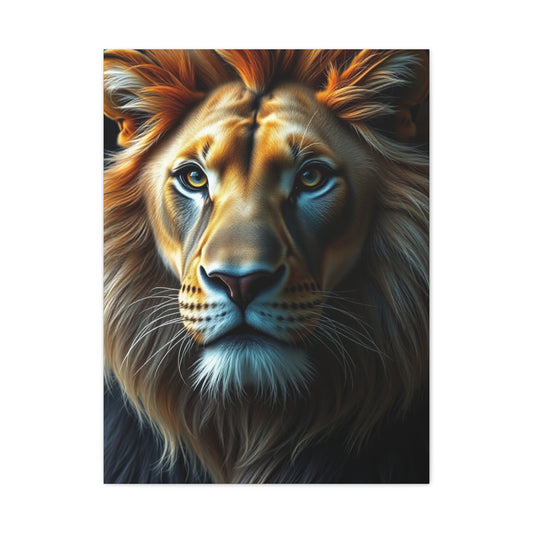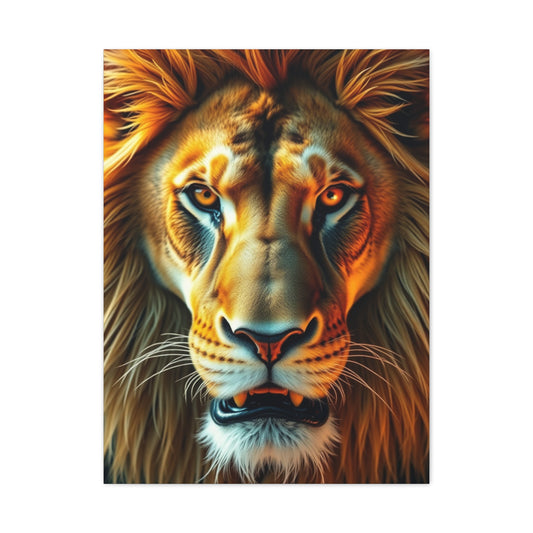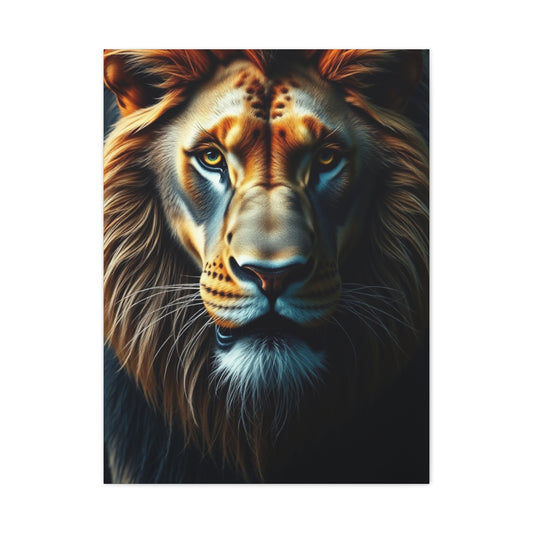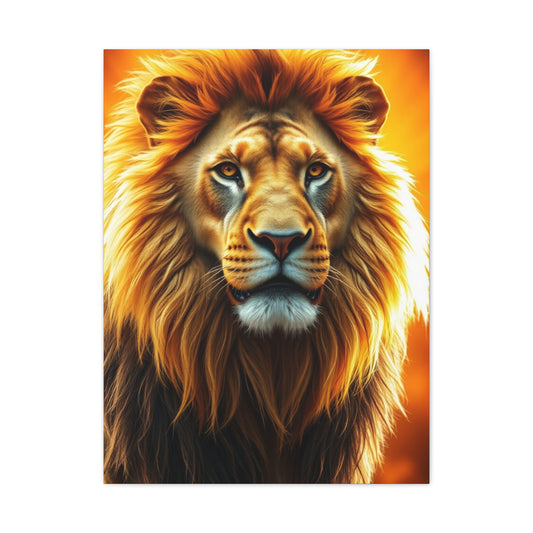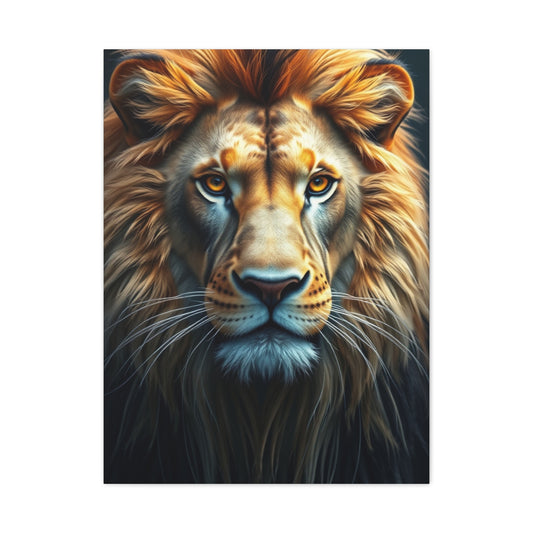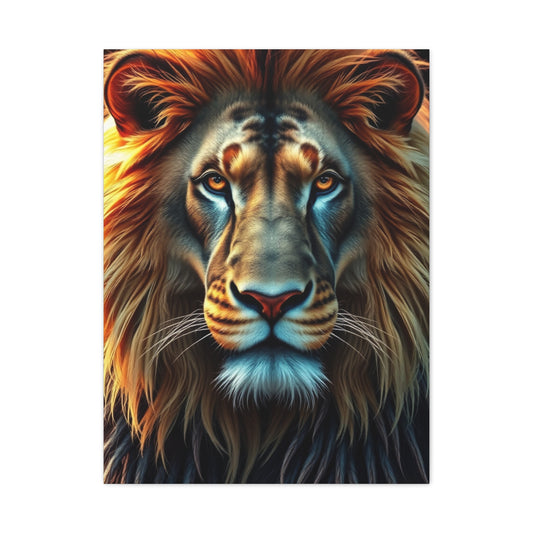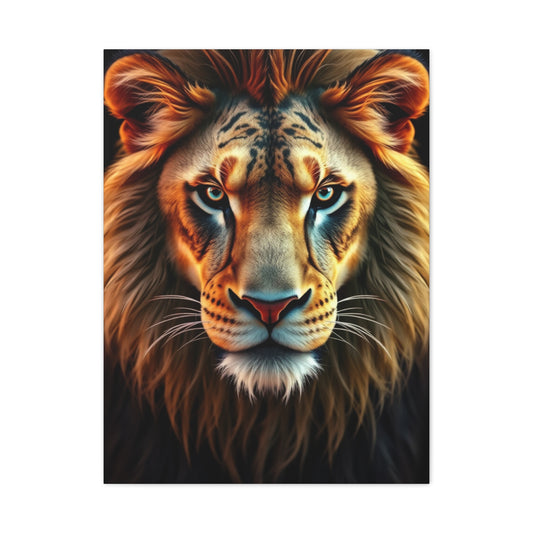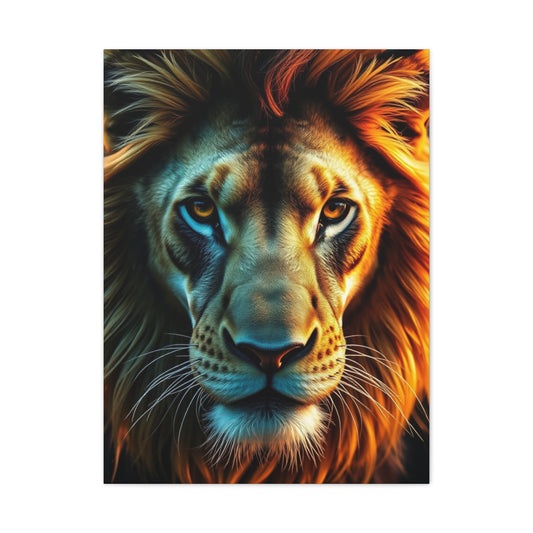13 Artistic Lion Wall Art Choices for Statement Living Spaces
The mesmerizing realm of lion wall art has long fascinated art collectors, interior designers, and homeowners who wish to infuse their spaces with both majesty and symbolism. Lions have captivated human imagination for centuries, embodying courage, leadership, and unrivaled power. As visual icons, their image resonates far beyond wildlife admiration, becoming an emblem of strength, inspiration, and elegance. When placed in an artistic medium, the lion transcends its role as a mere animal of the savannah, transforming instead into a timeless subject that bridges myth, culture, and contemporary design.
In modern home décor, lion wall art has emerged as a sophisticated way of combining raw natural beauty with refined aesthetic choices. From abstract canvases bursting with vibrant color to monochrome photographic prints highlighting every detail of a lion’s mane, these artistic expressions extend far beyond decoration. They hold the power to shape ambiance, evoke emotions, and narrate stories within the walls they occupy. Whether a regal lion portrait in a living room or a whimsical depiction in a bathroom, each piece enhances the personality of the space while reminding viewers of the timeless allure of this kingly creature.
The growing demand for lion wall art in 2023 is more than a fleeting design trend; it is a reflection of humanity’s enduring admiration for the lion as both animal and archetype. In exploring its historical roots, symbolic foundations, diverse categories, and practical applications, one can fully appreciate why this form of art continues to enchant across generations and cultures.
Historical Background
The artistic depiction of lions traces back thousands of years, illustrating how deeply entwined they are with the human psyche. In the caves of prehistoric Europe, early hunters etched animal figures, lions among them, into stone walls. These carvings were not mere decorations but likely carried spiritual or ritualistic significance, perhaps as symbols of protection or dominance. The Paleolithic era already recognized the lion as more than just a predator; it was an emblem of power and survival.
Ancient civilizations elevated lions to sacred status. In Mesopotamia, they were associated with Ishtar, the goddess of war and love, often shown riding or accompanied by lions to illustrate her authority. Egyptian art immortalized lions in temple carvings, hieroglyphs, and ceremonial objects, associating them with ferocity in battle and divine guardianship. Pharaohs frequently adopted lion symbolism to project strength and command over both their people and enemies.
Across the Indian subcontinent, lions held royal symbolism, epitomized by the Ashoka Pillar featuring four lions, now the national emblem of India. In Chinese culture, guardian lion statues, often referred to as “Foo Dogs” or “Shi Shi,” became architectural fixtures placed outside palaces and temples to ward off evil spirits. These stylized representations blended artistic craftsmanship with spiritual belief, shaping an enduring iconography that survives even today.
In medieval Europe, lions featured prominently in heraldry. Families and kingdoms used lion emblems to convey bravery, nobility, and dominance. Stained glass windows, tapestries, and manuscripts depicted lions as noble beasts embodying Christian virtues of courage and justice. The lion became synonymous with kingship, earning the title “king of beasts,” a phrase that continues to echo in modern expressions.
This profound historical presence paved the way for lion wall art in contemporary settings. Artists through the centuries adapted lion imagery to suit cultural and aesthetic contexts, allowing it to evolve from sacred carvings into modern home décor. Each new style, whether Renaissance painting, tribal craft, or digital art, has carried forward the majestic symbolism of the lion while adapting it to the language of its era.
Core Concepts and Foundations
The essence of lion wall art lies in its ability to merge symbolism with artistic expression. At its foundation, three central concepts dominate: power, beauty, and meaning. These core elements influence both the creation and appreciation of lion-themed art, ensuring that each piece communicates more than mere visual appeal.
The first concept is power. A lion, whether depicted roaring or calmly gazing into the distance, conveys an aura of dominance. Artists leverage this inherent strength to create commanding focal points in spaces. The mane becomes a crown of authority, while the piercing eyes radiate determination. Wall art featuring lions thus becomes more than decoration; it transforms into a psychological anchor, instilling confidence and resilience in those who behold it.
The second is beauty. Beyond their symbolic might, lions embody natural elegance. Artists celebrate the fluid motion of their bodies, the intricate strands of their mane, and the harmony of their form against varied backgrounds. From realistic renditions that capture every whisker to abstract interpretations that reduce the lion into flowing lines or bold colors, beauty remains a defining foundation. This aesthetic magnetism ensures that lion wall art resonates across diverse cultural and personal tastes.
The third concept is meaning. Lion imagery has always carried metaphorical weight, symbolizing leadership, wisdom, guardianship, and even familial bonds when depicted alongside lionesses and cubs. In contemporary art, these symbolic nuances continue to resonate. A lion and lioness wall piece may express unity and love, while a motivational canvas featuring a lion with inspirational quotes reflects perseverance. This layered meaning ensures that lion wall art is never passive; it engages viewers intellectually and emotionally.
Together, these foundations create a rich framework for lion wall art. They ensure that whether the medium is oil painting, photography, digital rendering, or mixed media, the lion remains a powerful subject that transcends cultural and temporal boundaries.
Types and Categories
The diversity of lion wall art today reflects the broad spectrum of artistic interpretation and consumer demand. Each category offers a distinct way of perceiving the lion, allowing homeowners and collectors to align their choices with personal taste and spatial requirements.
Realistic lion portraits represent one of the most timeless categories. These works strive for accuracy, capturing every detail from the shimmer of the eyes to the texture of the mane. They often appeal to wildlife enthusiasts or those who value lifelike depictions that bring the essence of the savannah into their homes.
Abstract lion art, on the other hand, distills the essence of the creature into bold strokes, vivid hues, and imaginative forms. Here, the lion’s presence is felt rather than literally seen, making such works ideal for contemporary and eclectic interiors. Abstract styles allow greater experimentation with mood, energy, and symbolism, often resulting in striking visual statements.
Motivational lion wall art combines imagery with inspirational messages. Popular in offices, gyms, and study areas, these pieces emphasize resilience, focus, and determination. The lion becomes both a visual muse and a metaphorical coach, urging viewers to embrace courage and ambition in daily life.
Couple or family lion artworks depict lions alongside lionesses or cubs, symbolizing unity, love, and protection. These are especially popular for bedrooms, nurseries, or living rooms where familial warmth is celebrated. They resonate deeply with those who view the lion not only as a symbol of strength but also as a guardian and nurturer.
Humorous or whimsical lion art represents another emerging category. Playful depictions, such as lions dressed in attire, lounging in modern settings, or even featured in bathroom décor, highlight the lighter side of art. These works break away from solemn symbolism to introduce charm and humor into daily living spaces.
Multi-panel lion canvases, often five-piece sets, have also gained popularity. These fragmented compositions create dynamic visual impact, stretching across larger walls to immerse viewers in the scene. They are particularly favored in spacious rooms, adding grandeur and dimension to the décor.
Cultural and tribal lion representations reflect heritage and traditional craftsmanship. From African-inspired patterns celebrating wildlife heritage to Asian depictions rooted in spiritual guardianship, these works preserve cultural narratives while enriching global interiors.
Collectively, these categories ensure that lion wall art appeals to diverse sensibilities. Whether the preference is for minimalist elegance, vibrant abstraction, or motivational symbolism, there exists a lion-themed artwork to suit every style and purpose.
Practical Applications
The application of lion wall art extends far beyond mere ornamentation, integrating seamlessly into varied interior design contexts. Its adaptability makes it suitable for both residential and commercial spaces, each benefiting from the energy and symbolism that lions project.
In living rooms, a lion portrait or multi-panel set often serves as the central focal point. It commands attention, anchoring the décor with authority. The regal aura of the lion resonates well with family gathering spaces, infusing them with strength and cohesion.
Bedrooms benefit from lion and lioness artwork, symbolizing intimacy and companionship. A black-and-white canvas of a lion couple, for instance, conveys quiet elegance and harmony, transforming private quarters into sanctuaries of both rest and connection.
Bathrooms, though unconventional, have embraced humorous lion art. Playful designs lighten the atmosphere, making functional spaces more engaging and enjoyable. A quirky lion print above the sink or bath adds unexpected character, proving that art can enhance even the most practical rooms.
Offices and workspaces frequently employ motivational lion wall art. The association of lions with leadership, ambition, and perseverance makes them ideal for environments where focus and determination are prized. These artworks not only inspire individuals but also convey professionalism and authority to visitors.
In commercial spaces such as cafes, hotels, and lobbies, lion wall art creates a memorable impression. Abstract or vibrant designs capture attention, while culturally inspired pieces offer depth and uniqueness. Their versatility allows businesses to project sophistication, warmth, or modern flair depending on the selected style.
Children’s rooms and play areas also provide fertile ground for lion wall art. Brightly colored or cartoonish depictions spark imagination, encouraging creativity and adventure. Such artworks instill a sense of curiosity about wildlife while maintaining a playful tone suited to younger audiences.
Outdoor or semi-outdoor areas, when equipped with weather-resistant prints or sculptures, can also host lion imagery. Patios, garden walls, or entryways benefit from the symbolic protection and grandeur lions embody, merging nature with artistry in harmonious ways.
Ultimately, the practical application of lion wall art lies in its transformative ability. It not only decorates but also defines the atmosphere of a room, influences emotions, and communicates values. Whether inspiring ambition, celebrating family, or sparking joy, lion-themed artwork remains one of the most versatile and evocative design choices available.
Techniques and Methods
The creation of lion wall art involves a wide spectrum of artistic techniques, each carrying its own visual language, emotional weight, and stylistic fingerprint. Artists who venture into this subject are often compelled to experiment with methods that capture both the realism of the lion’s physical form and the intangible aura of its symbolism. These techniques, whether traditional or digital, ensure that lion imagery resonates in diverse ways across modern interiors.
One of the most enduring techniques is painting. Oil on canvas has been a favored medium for centuries, allowing artists to layer pigments and achieve luminous textures in a lion’s mane or depth in its eyes. Oil techniques also provide longevity, ensuring the artwork endures as a lasting treasure within a home. Acrylics, by contrast, offer vibrancy and flexibility, drying quickly and enabling artists to experiment with bolder strokes and abstract interpretations of lions. Watercolors create softer impressions, perfect for dreamlike or whimsical versions that emphasize grace over grandeur.
Photography as a method has dramatically shaped lion wall art in the contemporary era. High-resolution wildlife photography captures details that even the most skilled brush may struggle to replicate—the glisten of a whisker, the raw intensity in a predator’s gaze, or the dust of the savannah swirling around its paws. Photographers often rely on patience, waiting hours or days in wilderness settings to capture a moment that later becomes a striking focal point in interior décor.
Digital art represents another innovative frontier. With advanced software, artists can blend realism with fantasy, reimagining lions in surreal landscapes or stylized aesthetics. This method allows for extensive customization, catering to diverse tastes from minimalism to vibrant maximalism. Digital techniques also support large-scale prints and multi-panel canvases, making them versatile for modern spaces.
Mixed media approaches combine painting, photography, and digital tools into unique hybrids. For instance, an artist might overlay abstract paint textures over a photographic lion portrait, creating depth and intrigue. Collage methods, where fragments of text, fabric, or metallic foil are incorporated, produce tactile and visually complex pieces.
Sculptural wall art, though less common, adds a three-dimensional element. Metal cutouts, wood carvings, and resin molds of lions can transform walls into dynamic surfaces. These methods highlight the lion’s strength and presence in ways flat imagery cannot, creating shadows and textures that shift with the light of the room.
Each of these techniques reflects not only artistic preference but also the intended atmosphere of the space. A photographic print may convey raw authenticity, while an abstract digital lion might infuse modern vibrancy. Collectively, these methods ensure that lion wall art remains as versatile as it is timeless.
Challenges and Common Mistakes
While lion wall art offers captivating beauty and symbolic resonance, both artists and collectors face challenges in execution and selection. Recognizing these pitfalls helps ensure that the artwork enhances, rather than diminishes, the intended space.
One common challenge is the balance between realism and symbolism. Artists often grapple with whether to depict lions with anatomical precision or emphasize metaphorical qualities. A hyper-realistic lion might appear too stark for a minimalist interior, while an overly abstract interpretation could lose the essence of the animal’s majesty. Achieving harmony between the two is a subtle but crucial task.
Scale presents another difficulty. Large lion canvases can dominate a room, overshadowing other elements, while smaller prints risk losing their impact. A frequent mistake is underestimating wall dimensions, resulting in artwork that feels either cramped or disproportionately imposing. Proper measurement and consideration of spatial balance are essential when selecting lion art for interiors.
Color usage often becomes a stumbling block. Many artists and buyers assume that lions must always be rendered in natural earth tones. While this works for realistic portrayals, it may restrict creativity and fail to match the palette of a room. Conversely, overly vivid or clashing colors risk overwhelming the eye. Successful pieces use color thoughtfully, either aligning with or strategically contrasting their environment.
For digital and photographic art, issues of resolution and print quality frequently arise. A poorly reproduced image may appear pixelated or dull, undermining the intended grandeur. Choosing high-resolution prints and reliable printing methods is critical to preserving detail, especially in large-scale installations.
Aesthetic over-saturation is another mistake. Lion wall art is powerful by nature; clustering multiple large lion pieces within a single space can create visual tension and fatigue. The impact of one strong focal artwork often outweighs the clutter of many. Minimalism in placement allows the symbolism to breathe and resonate.
From the artist’s perspective, the challenge often lies in capturing the eyes of the lion. Across cultures, the lion’s gaze is symbolic of wisdom, intensity, and vigilance. When this detail is poorly rendered, the artwork risks appearing lifeless. Mastering the subtleties of expression requires precision and patience.
Finally, collectors sometimes neglect context. A regal lion portrait might appear majestic in a living room, but feel oddly imposing in a child’s play area. Conversely, whimsical lion illustrations may delight children but fail to align with the formal tone of an executive office. Understanding context ensures the artwork not only looks appealing but also communicates the right message.
By recognizing these challenges and avoiding common mistakes, both creators and admirers of lion wall art can ensure the final result enriches its environment with elegance and meaning.
Trends and Future Outlook
The trajectory of lion wall art mirrors broader shifts in artistic movements, interior design, and cultural values. Emerging trends illustrate how this timeless motif is continuously reinvented to align with contemporary aesthetics and technological possibilities.
Minimalism has left a distinct imprint. Simple line-drawn lions, often rendered in monochrome or muted tones, are increasingly popular in modern apartments and offices. These understated works emphasize form and symbolism without overwhelming the viewer, aligning with the clean lines and neutral palettes favored in current design.
Vibrant abstraction represents another strong trend. Artists are experimenting with explosive color palettes, geometric fragments, and layered brushstrokes to reinterpret lions in imaginative ways. These dynamic pieces appeal to younger audiences seeking bold statements that double as conversation starters.
Personalization is an accelerating trend in the art market, and lion wall art is no exception. Buyers now seek custom creations where lions may be infused with personal symbolism, initials, or even stylistic references unique to their lives. Digital methods have made customization more accessible, enabling artists to tailor imagery to client desires.
Sustainability is shaping the future of wall art as well. Eco-conscious consumers are turning toward artworks created on recycled materials, printed with environmentally friendly inks, or crafted by artists dedicated to sustainable practices. Lion wall art, often associated with nature and conservation, resonates strongly within this movement, reminding viewers of their role in protecting wildlife habitats.
Technological integration is another significant outlook. Augmented reality and digital displays allow lion art to shift and move, creating interactive experiences. Imagine a lion’s eyes following a viewer across the room or its roar subtly echoing through integrated sound systems. Such innovations promise to blur the boundary between art and immersive environment.
Global influences will continue to shape lion depictions. As cultures intertwine through digital platforms, African, Asian, and European interpretations of lion imagery merge, creating hybrid styles that celebrate shared symbolism. Tribal motifs may coexist with futuristic digital patterns, forming eclectic new genres.
The future also points toward multi-functional art. Lion imagery could extend beyond traditional walls, appearing on illuminated panels, smart glass, or even projected onto surfaces. Such adaptability ensures its relevance in evolving living and working spaces.
Ultimately, lion wall art shows no sign of fading. Instead, it continues to evolve, embracing modernity while maintaining its ancient symbolic roots. The combination of timeless subject matter and innovative expression ensures that lions will remain an enduring force within interior design and cultural artistry.
Expert Insights
Artists, interior designers, and cultural scholars all provide valuable perspectives on the significance of lion wall art, shedding light on why it maintains such enduring allure.
Many wildlife artists emphasize that the lion is not merely an aesthetic subject but also a moral reminder. According to seasoned painters, the challenge lies in portraying not only the external form but the intangible spirit of the lion. They note that successful works communicate both ferocity and serenity, balancing two sides of the animal’s nature.
Interior designers highlight the role of lion wall art in shaping ambiance. They often recommend strategic placement—such as above a fireplace, behind a sofa, or as the centerpiece in an office reception area—to maximize its impact. Designers caution, however, that the artwork must align with the broader color scheme and theme of the room to avoid discord. For them, the lion is a tool of emotional architecture, shaping how a space feels as much as how it looks.
Cultural historians remind us that lion imagery cannot be divorced from its symbolic heritage. They point to the lion’s ubiquity across civilizations, from Mesopotamian temples to medieval heraldry, arguing that each modern piece carries echoes of this collective memory. In their view, lion wall art connects viewers to a long lineage of human reverence, reinforcing cultural continuity.
Contemporary digital artists offer yet another perspective. They see lions as a canvas for experimentation, merging tradition with innovation. Through techniques like 3D rendering and virtual reality, they can reimagine lions in fantastical environments, expanding the boundaries of what wall art can achieve.
Collectors frequently describe their attraction to lion imagery in personal terms. For some, it represents inner strength during times of struggle. For others, it symbolizes family unity or leadership aspirations. These testimonials underscore that lion wall art is not just decoration but a deeply personal expression of identity and values.
Psychologists who study art therapy even suggest that lion imagery has therapeutic benefits. The commanding presence of lions can inspire confidence, while their calm portraits may instill a sense of protection and stability. In therapeutic spaces, such artwork may aid individuals in overcoming fear, boosting resilience, and fostering courage.
Together, these expert insights reveal why lion wall art transcends mere ornamentation. It embodies a fusion of artistry, cultural history, psychology, and design, ensuring that its impact is both profound and multifaceted.
Emerging Trends in Wall Art
Wall art continues to evolve with cultural shifts, design philosophies, and technological advancements, making it a fascinating reflection of contemporary society. Lion wall art, in particular, illustrates how ancient symbolism adapts seamlessly to new artistic sensibilities. These emerging trends reveal how timeless motifs are being reframed to meet the aesthetic and emotional needs of modern spaces.
One prominent trend is the rise of oversized statement pieces. As living spaces adopt open-plan layouts, large canvases or murals depicting lions command attention and provide an anchoring focal point. These oversized works often feature minimalist backgrounds, allowing the lion to radiate strength and presence without distraction.
Another significant development is the popularity of monochromatic schemes. Artists and designers are exploring black and white or sepia-toned lion portraits that complement contemporary interiors. The absence of vivid color sharpens the focus on form, expression, and linework, resulting in a sophisticated, understated elegance that harmonizes with both rustic and modern décor.
Mixed-material art has become an experimental frontier. Lions are increasingly represented through layered textures such as metallic foils, reclaimed wood, or even woven fabrics. These artworks provide tactile depth, inviting viewers to experience the subject not only visually but also physically. Such multi-sensory approaches transform wall art into immersive décor.
Abstract interpretations of lions are another notable trend. Instead of focusing on photorealistic depictions, artists embrace fragmented shapes, splashes of bold color, or geometric patterns. These abstract works connect with younger generations who view art as a medium for self-expression and individuality. They infuse rooms with energy, creativity, and an avant-garde character.
The fusion of digital technology with traditional artistry has created striking possibilities. Digital artists use tools like projection mapping or augmented reality to animate lion imagery, allowing it to shift and adapt depending on the viewer’s perspective. Interactive art has gained traction in urban lofts, galleries, and public spaces where spectators crave experiences that transcend static decoration.
Cultural hybridity is also reshaping lion wall art. Artists draw inspiration from diverse traditions, merging African tribal motifs with Asian symbolism or European heraldic designs. These cross-cultural interpretations not only celebrate global interconnectedness but also honor the lion’s presence as a universal emblem of power and courage.
Sustainability has entered the mainstream of artistic production, influencing how lion-themed wall art is created and consumed. Eco-conscious artists employ recycled canvases, biodegradable paints, and ethically sourced wood to produce environmentally friendly works. This trend resonates strongly with audiences who see the lion as a guardian of the natural world and wish their artwork to echo ecological responsibility.
Finally, personalization has gained popularity. Commissioned works allow individuals to infuse lions with personal elements—such as family crests, meaningful patterns, or symbolic colors—making the art not just decorative but deeply personal. This bespoke approach strengthens the emotional connection between the artwork and its owner.
Together, these emerging trends reveal a fascinating trajectory. Lion wall art continues to retain its historical gravitas while embracing modern experimentation, ensuring it remains a vibrant force within interior design and cultural creativity.
Step-by-Step Guides
Creating or curating lion wall art requires not only aesthetic intuition but also a structured process to ensure the result harmonizes with personal taste and spatial context. Whether one is an artist seeking to produce a new piece or a collector searching for the perfect addition to a home, following thoughtful steps guarantees a successful outcome.
Choosing the Right Concept
The first step lies in clarifying the artistic concept. Ask what the lion should represent within the space. Should it evoke authority, tranquility, or familial bonds? For example, a roaring lion might symbolize strength and determination, ideal for an office or gym. A calm lion resting under a tree could convey serenity, perfect for a bedroom or meditation space. Defining the symbolic intent ensures the artwork aligns with the emotional atmosphere desired.
Selecting the Artistic Style
Once the concept is clear, consider the artistic style that best communicates the idea. Realistic paintings emphasize anatomical precision and fine detail, making them suitable for formal or traditional interiors. Abstract or geometric lions, by contrast, create modern statements filled with dynamism. Digital styles can blend fantasy with reality, offering versatility for eclectic tastes. Matching style to both the theme of the artwork and the character of the room helps maintain harmony.
Choosing Medium and Technique
Decide on the medium that resonates with the intended message. Oils convey richness and depth, while acrylics offer bold vibrancy. Watercolors provide softness and delicacy, often ideal for smaller, intimate spaces. Photography emphasizes authenticity, while digital prints allow experimentation with scale and customization. Mixed-media approaches bring uniqueness through texture and layering. The chosen medium significantly impacts the final impression of the artwork.
Considering Dimensions and Placement
Measure the intended wall space with care before commissioning or purchasing a piece. Large canvases suit expansive walls in living rooms or entryways, while smaller prints or panels are effective in personal corners or galleries. Placement is equally crucial; positioning the artwork at eye level ensures engagement, while alignment with furniture anchors the design. Thoughtful sizing and placement enhance visual balance and allow the lion to command attention without overwhelming the room.
Balancing Colors with Interior Design
Pay close attention to color harmony. A golden-toned lion can blend seamlessly with warm wooden interiors, while cooler tones such as blue or grey can create contrast in modern minimalist homes. For bold statements, consider multi-colored or abstract designs that stand out as vibrant focal points. Colors should either complement existing décor or provide deliberate contrast, creating a sense of cohesion rather than chaos.
Evaluating Quality and Craftsmanship
Quality cannot be overlooked. For paintings, observe brushstrokes, layering, and the durability of materials. For prints, resolution and paper or canvas quality are vital to preserve sharpness. For mixed media, ensure structural integrity and longevity. Substandard craftsmanship risks diminishing the grandeur that lion wall art is meant to exude. Prioritizing quality ensures the artwork remains impactful for years to come.
Customization and Commissioning
If pursuing a personalized piece, collaborate closely with the artist. Share ideas, color preferences, symbolic meanings, and the ambiance of the intended space. Communication is key to ensuring the final product aligns with the vision. Commissioned art often carries greater sentimental value, as it embodies both the creativity of the artist and the unique perspective of the patron.
Installation and Lighting
Proper installation transforms the viewing experience. Use sturdy hooks or brackets for heavy work and ensure symmetry in placement. Lighting plays a transformative role, bringing details to life and shaping atmosphere. Spotlights can accentuate textures, while soft ambient lighting may enhance calm portraits. Thoughtful lighting design ensures the lion appears vibrant and commanding even in dim conditions.
Maintenance and Preservation
Art requires care to retain its beauty. Keep pieces away from direct sunlight to prevent fading, avoid damp environments to protect materials, and dust frames regularly. For valuable works, consider professional preservation techniques such as UV-protective glass or climate-controlled display areas. Long-term maintenance safeguards both aesthetic and financial investment.
Incorporating into a Collection
For those building a collection, think about how lion wall art interacts with other artworks. It may serve as the centerpiece or harmonize with complementary themes, such as savannah landscapes, tribal patterns, or other wildlife. Creating dialogue between pieces enriches the collection, transforming walls into curated narratives rather than random assemblies.
Techniques and Methods
The craft of creating lion wall art encompasses a wide spectrum of techniques that have evolved through centuries of artistry and experimentation. Each method offers distinct textures, tones, and interpretations, enabling artists to capture the lion’s essence in ways that resonate with diverse audiences.
One of the most revered approaches is oil painting. This traditional medium allows for rich layering, subtle gradients, and a remarkable sense of depth. Artists working with oils often create lifelike representations of lions, from the shimmer of fur under sunlight to the intensity of piercing eyes. The slow-drying nature of oils grants time for blending, which results in velvety transitions that bring the animal to life.
Acrylic painting, by contrast, is celebrated for its vibrancy and speed. Modern artists embrace this medium to create bold, striking depictions that suit contemporary spaces. Acrylics also allow for experimentation with texture through palette knives or sponges, giving lion portraits a tactile energy.
Watercolor, delicate and ethereal, lends itself to interpretations of lions that emphasize elegance and subtlety. A softened mane flowing into an abstract background can evoke serenity, reminding viewers of the lion not only as a symbol of strength but also as a creature of harmony within nature.
In recent decades, photography has emerged as a dominant technique in lion wall art. Wildlife photographers capture the raw majesty of lions in their natural habitats, often emphasizing candid moments of interaction, rest, or hunting. These photographic artworks highlight authenticity and transport viewers directly into the savannah.
Digital illustration has expanded possibilities even further. Artists can manipulate color palettes, incorporate geometric motifs, or fuse fantasy elements with realism. Digital methods also enable scalability, making it possible to reproduce lion imagery in formats ranging from posters to expansive murals. This adaptability aligns perfectly with contemporary interior design trends.
Mixed media has become a hallmark of experimentation. Artists combine paint with materials such as metal leaf, reclaimed wood, or textiles to enrich the visual and tactile experience. For example, a lion’s mane constructed from layered gold foil might shimmer with light, symbolizing regality and grandeur. These methods allow audiences not only to view the lion but also to feel its symbolic presence through texture.
Sculptural wall art is another expressive avenue. Carved wooden reliefs, metal cutouts, or ceramic tiles shaped into lion forms create a three-dimensional effect that extends beyond the flatness of a canvas. This method bridges the boundary between art and architecture, transforming walls into living surfaces.
Murals also represent a powerful technique, particularly in public spaces. Large-scale lion murals dominate cityscapes, blending urban energy with primal strength. Street artists often employ spray paint and stencils, introducing vibrancy and spontaneity to the depiction. Murals carry communal energy, turning the lion into a guardian not just of a home but of neighborhoods.
Through these diverse methods, lion wall art demonstrates a dynamic versatility. The choice of technique determines not only the aesthetics of the piece but also the emotional response it elicits, making the method as significant as the subject itself.
Challenges and Common Mistakes
Despite its widespread appeal, the creation and curation of lion wall art involves challenges that require careful navigation. Both artists and collectors can encounter pitfalls if they approach the process without awareness or intentionality.
For artists, one of the most common difficulties lies in proportion and anatomy. The lion, with its muscular structure and distinctive mane, demands precision. Inaccurate proportions risk diminishing the majestic aura, resulting in depictions that feel awkward or unconvincing. Overemphasis on ferocity, for instance, can make the lion appear exaggerated rather than noble.
Another challenge is maintaining originality. Because lions have been portrayed for centuries, avoiding cliché or repetitive imagery can be daunting. Many works fall into the trap of conventional roaring portraits, lacking innovation. Artists must seek fresh perspectives—whether through abstraction, cultural symbolism, or experimental materials—to ensure their work feels distinctive.
Color balance poses another frequent obstacle. Overuse of vibrant tones may overpower the subject, while overly muted palettes can drain vitality. Misalignment between the artwork’s color scheme and the surrounding décor also diminishes impact. Achieving harmony requires both artistic sensitivity and awareness of interior design principles.
For collectors, common mistakes often involve misjudging scale. Purchasing a lion artwork too small for a vast wall leaves it lost in emptiness, while selecting one too large for a confined space results in overwhelming imbalance. Proper measurement and visualization are crucial before acquisition.
Improper placement is another error. Hanging artwork too high or too low disrupts visual flow. Neglecting lighting further reduces the dramatic effect. Shadows or glare can obscure details, diminishing the appreciation of craftsmanship.
A frequent oversight is ignoring quality in favor of affordability. Low-resolution prints or cheaply produced works may initially seem appealing but quickly lose their allure. In contrast, investing in durable, well-crafted pieces ensures long-term value and continued visual impact.
Carelessness in maintenance also undermines longevity. Failing to protect works from sunlight, humidity, or dust can lead to fading, warping, or damage. Art should be treated not merely as decoration but as an asset deserving preservation.
Finally, a subtle yet significant mistake lies in ignoring personal resonance. Selecting a piece solely because it is fashionable or matches a color scheme may result in a superficial connection. Wall art should inspire, provoke thought, or evoke emotion. Without that bond, the artwork risks becoming a fleeting trend rather than a cherished presence.
Recognizing these challenges allows both creators and admirers to engage more thoughtfully with lion wall art, ensuring it retains its symbolic weight and aesthetic magnificence.
Trends and Future Outlook
The trajectory of lion wall art continues to evolve in fascinating ways, shaped by cultural dynamics, design innovation, and shifting sensibilities. Current trends suggest that the future will be marked by a blending of tradition with new technologies, as well as a growing awareness of sustainability and inclusivity.
Minimalist interpretations are likely to expand, with artists distilling the lion’s form into sleek lines and subtle gestures. This resonates with the global embrace of minimalist lifestyles, where less is perceived as more, and where clarity takes precedence over excess. Such works maintain symbolic power while integrating seamlessly into uncluttered modern environments.
Personalization will grow more central. With the rise of bespoke design, clients increasingly seek artworks that carry intimate meaning—whether through color symbolism, embedded motifs, or personalized narratives. Lion wall art will likely become more customized, reflecting both collective symbolism and individual identity.
Digital integration will continue to redefine artistic practice. Virtual reality and augmented reality will allow viewers to interact with lions in immersive spaces, transforming walls into living canvases. Interactive art, where colors shift or details emerge under different lighting, will appeal to audiences seeking dynamic engagement.
Global influences will further enrich the iconography of lions. As societies become more interconnected, artists will weave elements from multiple traditions into their work. Lions might appear adorned with tribal geometry, infused with Eastern spiritual symbolism, or integrated into futuristic urban aesthetics. These hybrid representations celebrate the lion as a truly global archetype.
Sustainability will remain at the forefront. Eco-friendly materials, recycled substrates, and natural dyes will dominate artistic production. Artists and collectors alike will view the lion not only as a symbol of strength but also as a reminder of ecological stewardship. The future of lion wall art will thus carry ethical resonance alongside aesthetic value.
Another likely development is the expansion of collaborative art. Communities may co-create lion murals, blending local creativity with collective expression. This participatory approach enhances social connection and transforms public spaces into canvases of shared identity.
Finally, the rise of digital marketplaces and blockchain authentication will shape how lion art is bought and sold. Non-fungible tokens (NFTs) may establish new ways of owning and trading digital lion artworks, offering collectors secure provenance and artists fair compensation.
The future of lion wall art promises to be both dynamic and meaningful, balancing heritage with innovation, individuality with community, and aesthetics with ethics.
Expert Insights
Artists, curators, and cultural theorists provide invaluable perspectives on why lion wall art continues to hold timeless appeal. Many emphasize the psychological impact of the lion as a subject. The lion embodies authority, courage, and nobility, qualities that resonate universally. Placing such imagery in a home or public space is not merely decorative but also aspirational, reminding viewers of virtues they admire or seek to cultivate.
Experts in interior design highlight the versatility of lion wall art. A roaring lion may energize an office, while a serene lioness can calm a bedroom. The adaptability of this motif across moods and contexts ensures its enduring relevance. Designers also underscore the importance of balance, advising that lion art should either dominate a space as a centerpiece or integrate subtly into a larger visual scheme, but never occupy an ambiguous middle ground.
Art historians often contextualize lions within a broader narrative of symbolism. From medieval heraldry to African folklore, the lion has embodied diverse meanings across epochs. Contemporary lion art inherits this legacy while layering new interpretations, allowing viewers to engage with both history and modernity simultaneously.
Cultural experts note that lions transcend geographical boundaries. They may represent kingship in Europe, guardianship in Asia, or spiritual power in Africa. This universality makes lion wall art appealing to global audiences, enabling it to function as a cross-cultural bridge.
Psychologists studying the influence of visual symbols argue that lions evoke primal associations rooted in human evolution. As apex predators, lions command respect and awe. Encountering their image in art can stir deep subconscious responses, strengthening the sense of empowerment or protection in viewers.
Finally, practicing artists themselves emphasize experimentation. They encourage aspiring creators to approach lions not only as subjects of replication but as canvases of imagination. Whether through fragmented abstraction, luminous textures, or digital fantasy, they argue that each new representation contributes to the evolving dialogue between humanity and its symbolic animal.
These expert insights reaffirm that lion wall art is not a fleeting trend but an enduring cultural expression, enriched by history, psychology, and creativity.
Conclusion
Lion wall art stands as a profound intersection of artistry, symbolism, and interior design. From ancient cave drawings to cutting-edge digital installations, lions have consistently embodied values that humanity holds dear—courage, protection, and majesty. The adaptability of this motif has ensured its presence across centuries, and its resonance continues to deepen as new methods, challenges, and perspectives emerge.
Through diverse techniques ranging from oil painting to digital rendering, lion imagery reveals different dimensions of its power. Artists experiment with materials, styles, and technologies, ensuring that each era adds fresh nuance to the timeless archetype. Challenges along the way—whether technical, aesthetic, or curatorial—only highlight the importance of intentionality and craft in honoring such a potent subject.
The trajectory of lion wall art reflects broader cultural currents. Minimalism, sustainability, digital interactivity, and personalization all shape the future of how lions will be represented and experienced. As societies become more interconnected, the lion evolves into a symbol not of one culture alone but of humanity’s collective imagination.
Expert perspectives underscore the depth of this enduring motif. The lion speaks to primal instincts, cultural narratives, and personal aspirations, making it a versatile and deeply moving subject for artists and audiences alike.
Ultimately, lion wall art is more than an adornment. It is a dialogue between history and modernity, between personal identity and collective heritage. It transforms walls into stages where courage, majesty, and imagination come alive. As trends evolve and methods diversify, the lion will undoubtedly remain a timeless guardian of artistic expression and human spirit.

